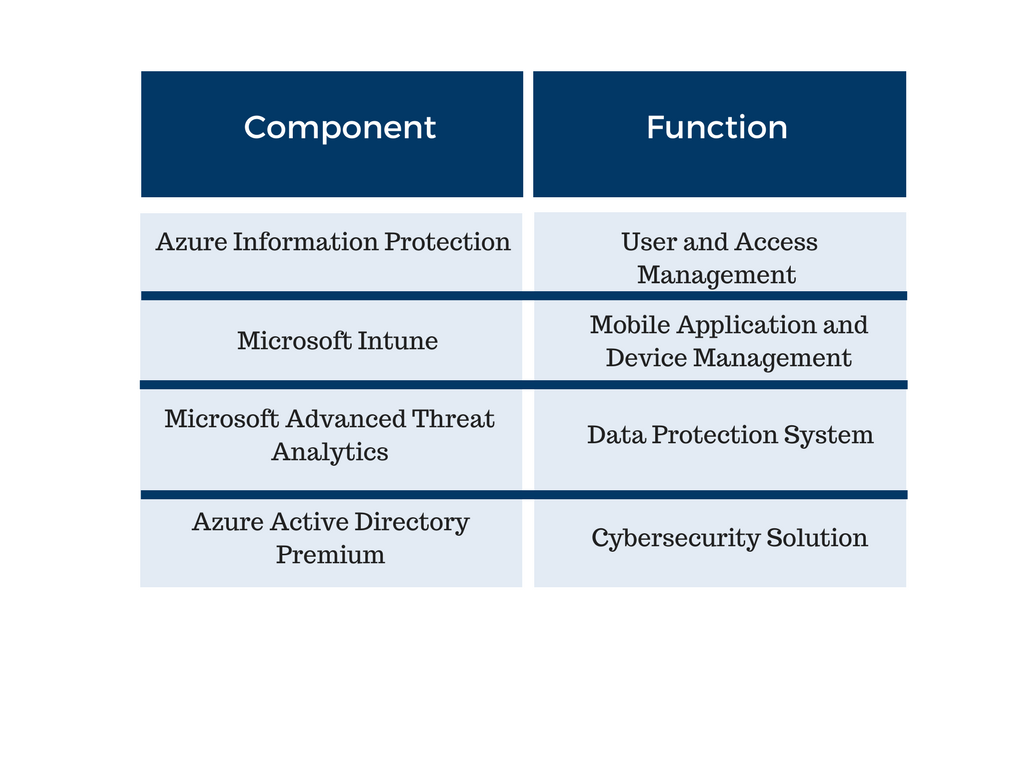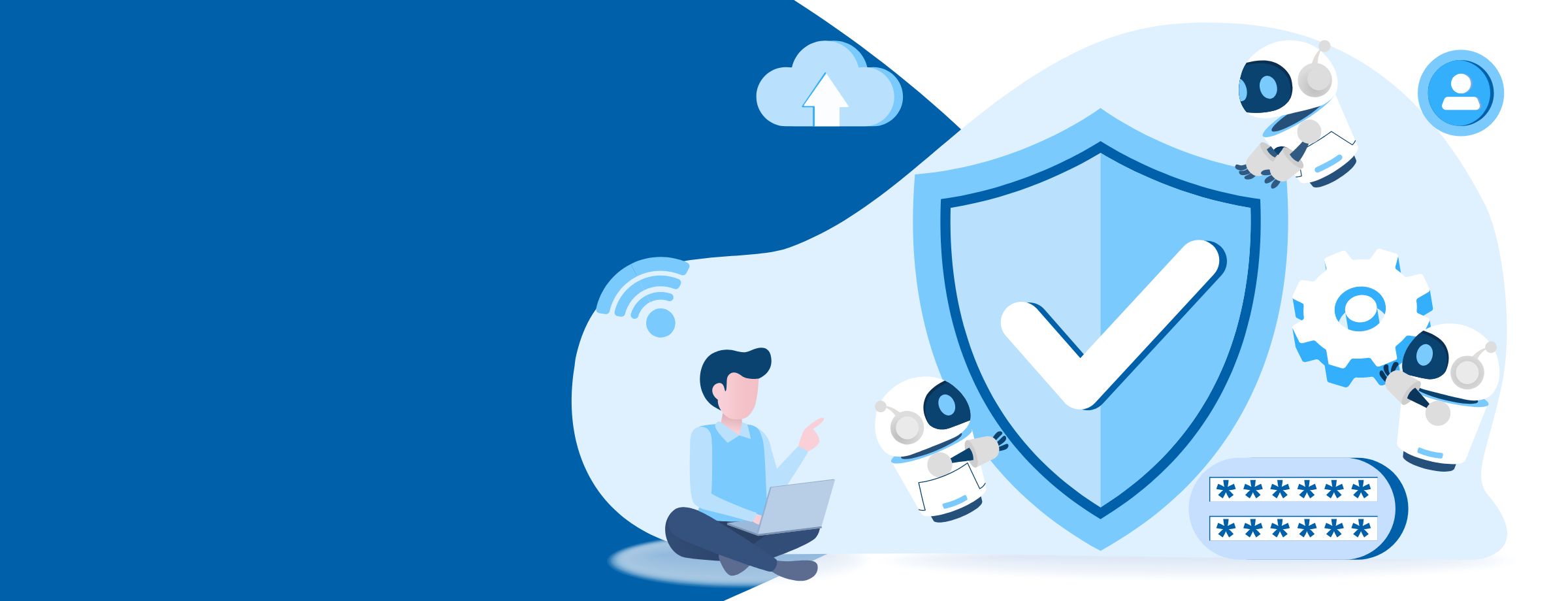Mobile devices are very powerful nowadays, even more so than laptops. As a result, many employees prefer to use their smartphones and other mobile devices to complete tasks on the go. But this rise in popularity of mobile devices comes with an increased security risk. And since mobile devices are so small, it’s easier to lose them—and the data they contain. Microsoft’s Enterprise Mobility + Security (EMS) is the solution to all these problems. The cloud-based program promotes mobility while ensuring security, allowing administrators to easily manage accounts, change passwords, and monitor data.
Did you know 63% of SMBs have increased their security spending, but more than half still experience breaches? Find out how you can better protect your customers with Microsoft 365 and EMS.
Managing and protecting users, applications, and data
EMS gives you control and flexibility in managing all applications on mobile devices. As employees use smartphones most of the time, managing consistent, secure access with single sign-on is imperative. This ensures that your employees’ productivity is not hindered, and they can still access all their applications.
Not all users need access to all the applications, though. Administrators can enable access to specific applications for certain users. And to top things off, it is currently integrated with 2500 of the most famous SaaS apps, giving users a wide selection to choose from.
EMS promotes self-service
EMS allows employees to be grouped into teams, which in turn allows IT departments to assign specific applications to whole groups. For example, if someone joins the sales department and needs access to the applications the team uses, with the permission of group admins, they’ll have instant access.
With EMS, employees can also change their passwords and perform numerous other tasks that previously required IT help. Reducing the number of people that need to be involved with simple tasks streamlines processes.
Interested in learning more about EMS features? Check out this blog: Microsoft Enterprise Mobility & Security Suite: 3 Features to Protect Your Office 365 Tenants
Components of EMS
The following are the four main components of EMS:
To better understand how EMS benefits organizations, we’ll look at each of these components in detail.
-
Azure Information Protection
With employees now being able to remotely access sensitive company data from virtually anywhere in the world, there comes a need for increased protection and security. Frequently, such data need to be shared with colleagues both within and outside the organization. Azure Information Protection offers the following functionalities:
- Classification of data based on sensitivity
- Encryption of data and usage control
- One-click processes that allow employees to protect data
- Reporting and tracking of data
-
Microsoft Intune
Employees want consistent access to the company’s resources at all times, from any given device. This is a challenge for IT professionals, who want to provide maximum mobility, all the while, protecting the corporate resources. Microsoft Intune is responsible for dealing with the mobile devices of the employees and provides the following functionalities:
- Mobile application management
- Support for IOS, Android, and Windows
- Remote wiping of data
- Endpoint protection
Interested in learning more about Microsoft Intune? Check out this blog: Mobile Device Management: Office 365 vs. Microsoft Intune
-
Advanced Threat Analytics
Through Advanced Threat Analytics, Microsoft secures the whole system of an organization and detects suspicious activities. So that, if the credentials of a manager are compromised and a hacker gains access to the system. Advanced Threat Analytics will warn the company of the potential dangerous situation by detecting the changed behavior of that manager.
Microsoft’s Advanced Threat Analytics provides companies with following functionalities:
- Behavioral analytics
- Detection and prevention of malicious attacks
- Alerts and active feedback and recommendations
- Integration with active Security Information and Event Management (SIEM) systems
-
Azure Active Directory Premium
Faced with the BYOD trend, IT departments have to secure a greater number of devices. Azure Active Directory Premium makes this whole process easier with the following functionalities:
- Self-service and password reset
- Multi-factor authentication
- Single sign-on for multiple apps
- Threat and security reports
- Sync capabilities across cloud and on-premises directories
The benefits of EMS
So it’s clear that EMS reduces the burden on IT teams, which results in cost savings. But what are some of the other benefits of integrating EMS?
-
Managing Applications
As mentioned previously, EMS is integrated with more than 2500 of the leading SaaS applications. This means companies can provide more customized application packages to their users, all with single sign-on enabled.
-
Work anywhere, anytime
With an EMS system, employees can access their data and applications from literally anywhere in the world. Working from the comfort of your own home has never been easier!
-
Single sign-on
With single-sign on, employees can access all their registered applications with just a single identity. Ultimately, this simplifies identity management and enhances employee productivity.
-
Data protection
EMS is easily integrated with Android, IOS, or Windows operating systems. It provides protection to all these devices and with remote data wiping, usage alerts and notifications, active threat analytics, and data tracking, EMS ensures that all your company data remain protected.
-
Reduced costs
Perhaps the most important benefit of EMS is the reduced cost of managing teams. With EMS, the cost of infrastructure decreases, as all data are shifted to the cloud. IT departments also no longer have to worry about micromanaging users. Above all, EMS helps companies save considerable sums by reducing the risk of data breaches.
These are just some of the main benefits of EMS. In short, EMS aligns your business with modern workplace requirements. If even some of your employees work remotely and use mobile devices, as many people do nowadays, integrating EMS is essential to ensuring that your data remain protected at all times.





